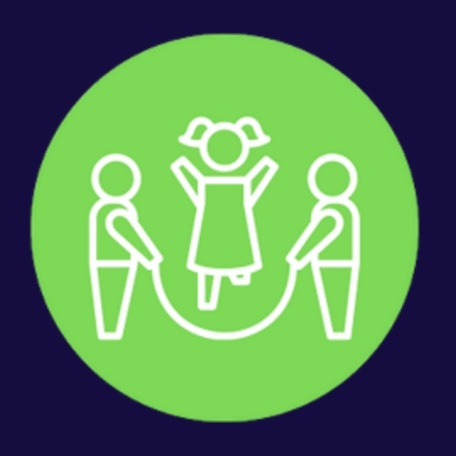Playful Toolkit Activities for Creative Collaboration, Part 1
Three activities that use imagination and play to enhance creative collaboration
Dear collaborative discussion friends,
This week we are highlighting three activities from the Creative Collaboration Module that use play to help participants flex their creative muscle and stretch their thinking. The methods used in these activities are, respectively, word associations, Monroe’s Motivated Sequence (often seen in advertising), and the improv technique of “yes, and”. All the activities in the toolkit have an activity key that indicates the level of the activity (beginner or advanced) and other characteristics using icons. Activities that use playful methods are denoted with the following icon.
If you missed the previous newsletter, Introducing our Summer 2023 Collaborative Discussion Coaches, you can access it and our other weekly newsletters by subscribing below.
This week's activities:
Activity 2.3 – Seeking Innovation
Activity 2.5 – Cultivating a Willingness to Play
Activity 2.6 - Building on the Ideas of Others
Three activities that use imagination and play to enhance creative collaboration
Activity 2.3 Seeking Innovation helps participants practice innovative thinking. It encourages participants to move beyond the constraints of their current ideas or thinking about an issue. By playing with words to spark new ideas, it enables participants to generate solutions that are both practical and inventive.
Participants are first invited to share their current knowledge and ideas on a chosen issue, which is collected and organized using a mind map (try mindmeister). They are then provided with a good words list, such as this IF Good Words List, and asked to randomly choose a verb, noun and adjective. Participants are encouraged to play with these three word combinations to see how they might connect to the words and ideas on the mind map. They are invited to use these connections to generate new ideas that can be further developed into innovative and feasible solutions to address this particular problem. They then share their ideas with the full group and reflect back on what it was like to use this process of using a mind map and word associations to spark ideas.
This activity helps participants think outside the box and apply playful and imaginative thinking to create innovative solutions to serious issues.
Activity 2.5 Cultivating a Willingness to Play demonstrates how play can help uncover new perspectives and ideas. It helps participants suspend their seriousness and analytical thinking. Participants are first introduced to a familiar method for selling an idea or product often seen in advertising, called Monroe’s Motivated Sequence. They are then asked to develop pitches for solutions to address a particular issue and present these pitches to the whole group. Participants are encouraged to have fun and be silly while developing their pitches, helping them gain a deeper understanding of how play can be used to energize a group and explore new avenues for solving a particular problem.
This activity helps participants engage their playful side to explore topics from a fresh perspective, energize the group and unleash the power of creativity and imagination in developing solutions to complex issues.
Activity 2.6 Building on the Ideas of Others uses the improv method of “yes, and” to help participants learn how to have a collaborative, rather than competitive discussion. This activity helps participant understand how responding to ideas with “yes, but” versus “yes, and” changes the nature of the conversation.
Participants are given a less serious topic of discussion, such as planning a vacation and asked to discuss this topic and respond to each other’s vacation ideas or suggestions with “yes, but”. They are then asked to try planning a vacation again and this time respond with “yes, and” to each other’s ideas. After these two quick rounds of discussion, participants are invited to reflect on the two conversations they had and how they felt during each conversation. They asked to think about which method (“yes, but” or “yes, and”) had them feeling more excited about the vacation they were trying to plan. Participants are then asked to discuss a more serious topic using “yes, and”. They are encouraged to find the pieces of truth in what someone says and then build on the other person’s idea with their own. Participant then debrief as a group on whether “yes, and” means you have to agree or if it can be used to constructively disagree and how using this phrase changed how they listened and other aspects of the discussion.
This activity helps participants move away from the urge to be competitive or win in a discussion and towards more collaboration and thinking together with others. It provides participants with a method for having truly collaborative discussions that result in better ideas and foster a sense of connection.
Upcoming Events
Registration is now open for our annual Collaborative Discussion Coach Summer Training! The cost of the training is $265. We are able to offer a discounted price due to the generous support of the Interactivity Foundation. Our programming should never be cost prohibitive. Please contact us if a scholarship is needed. Learn more and register here!
Looking forward to collaborating,
Ritu Thomas & the Collaborative Discussion Team








